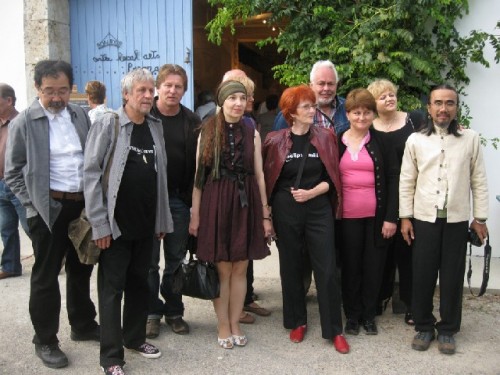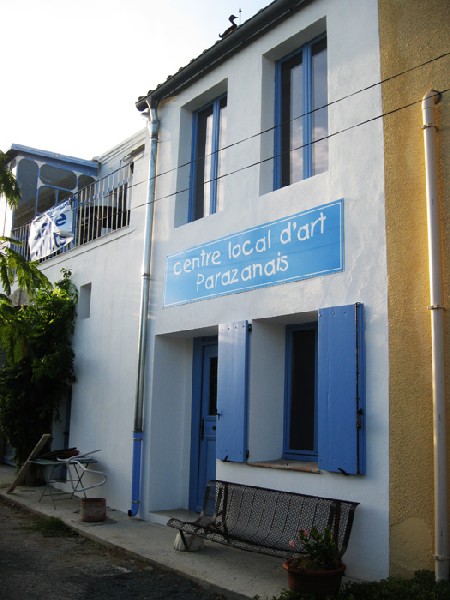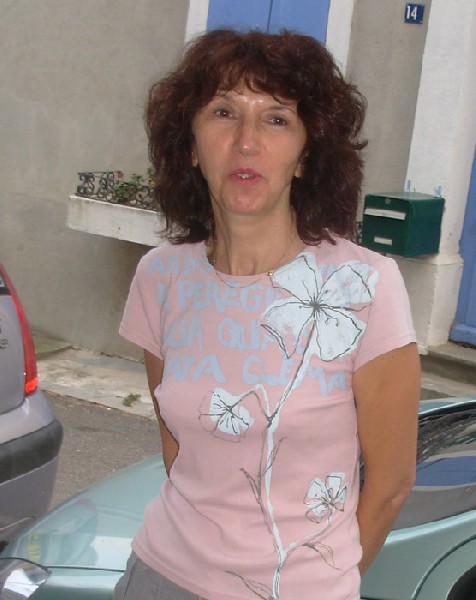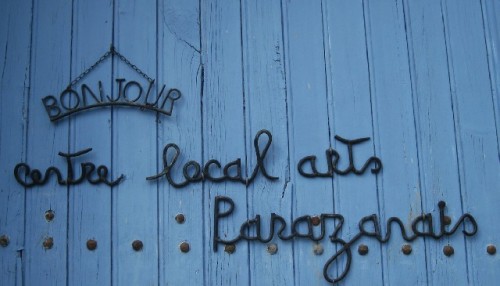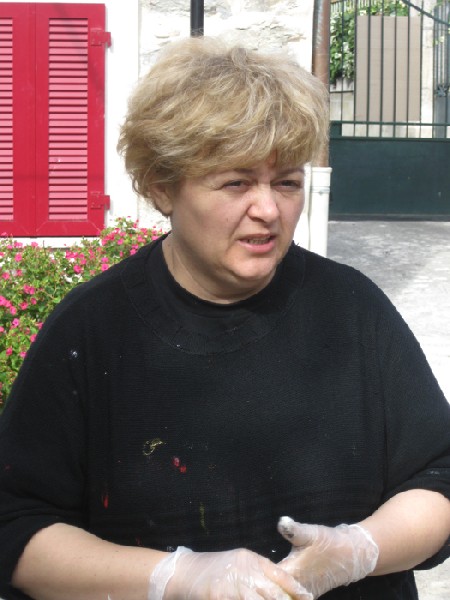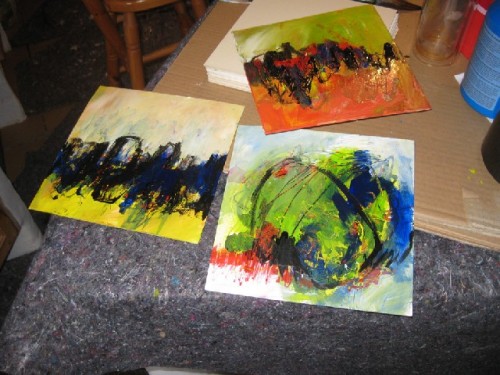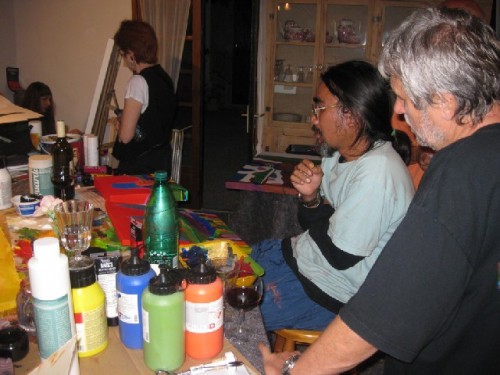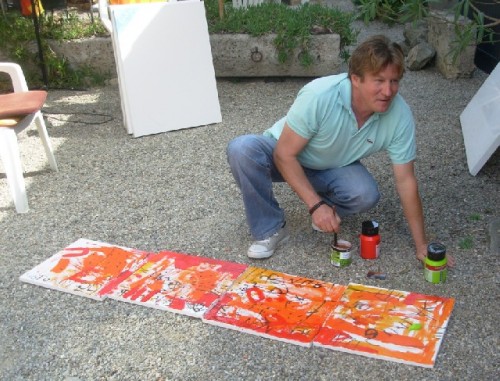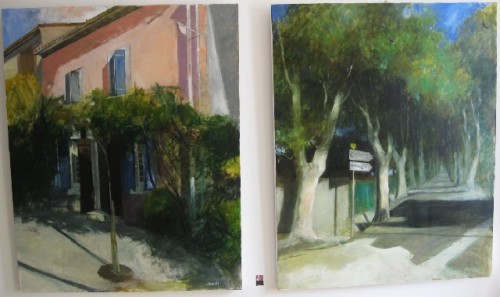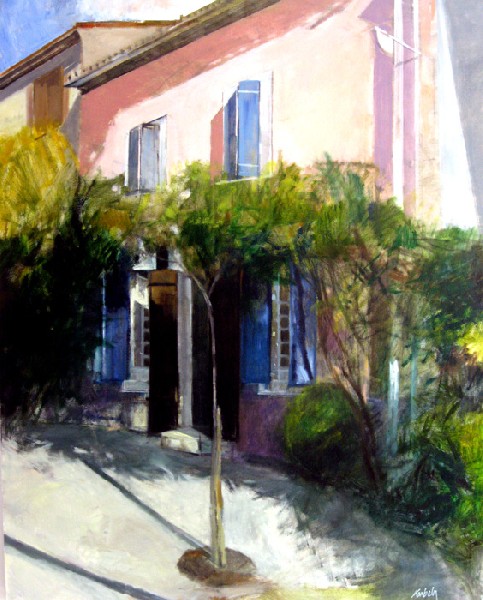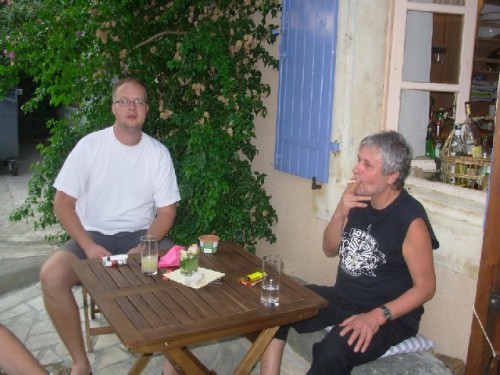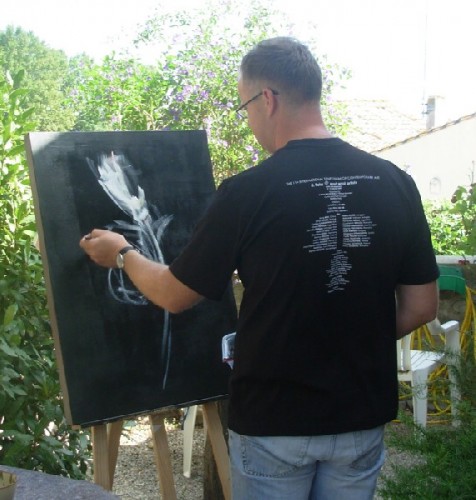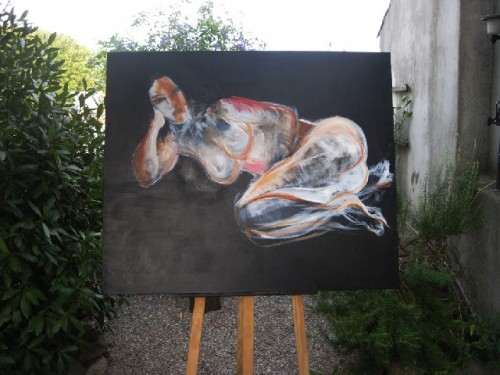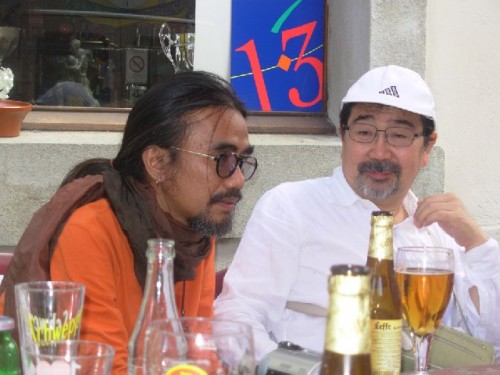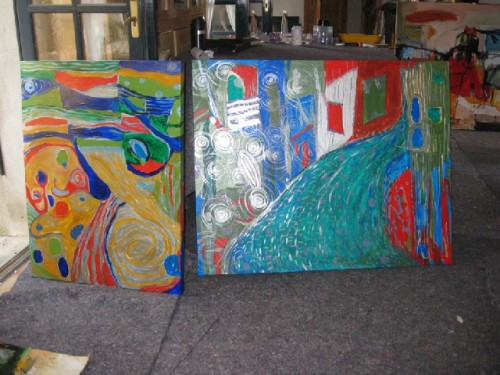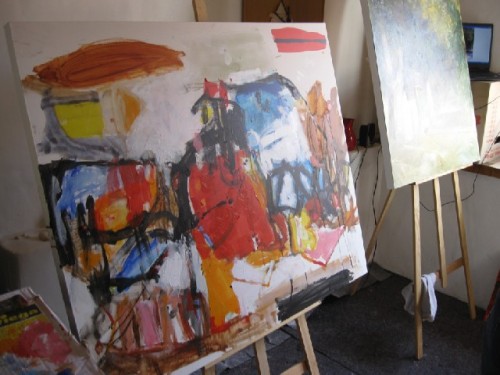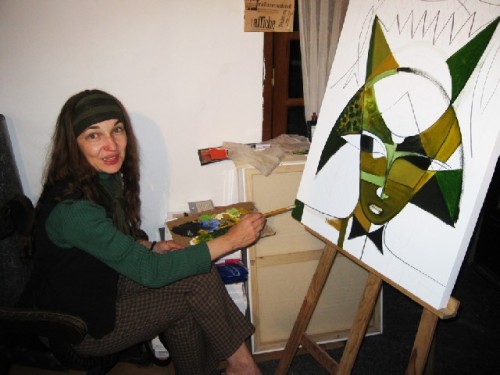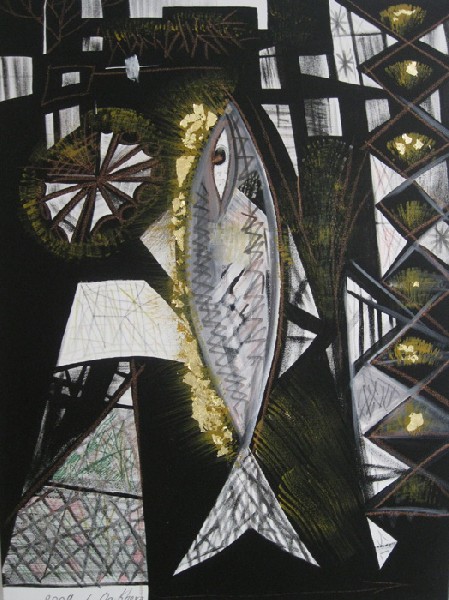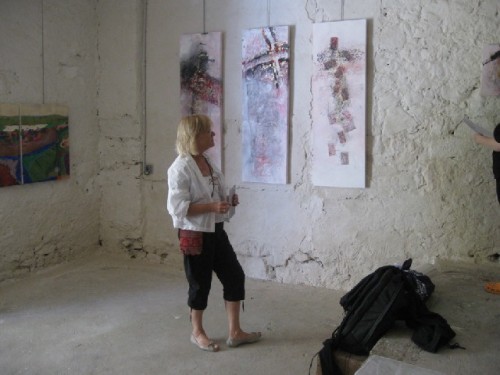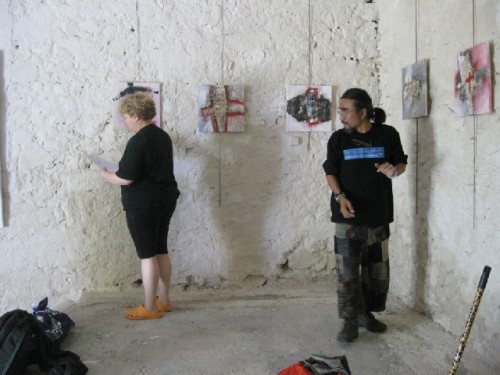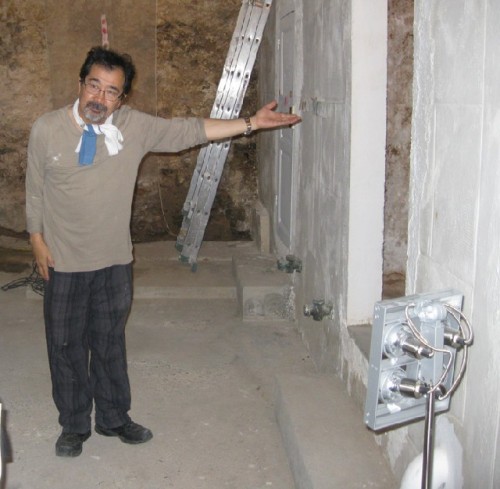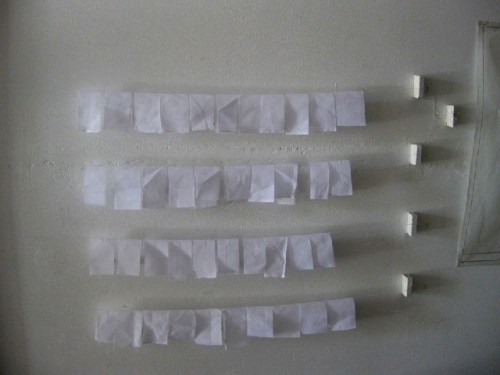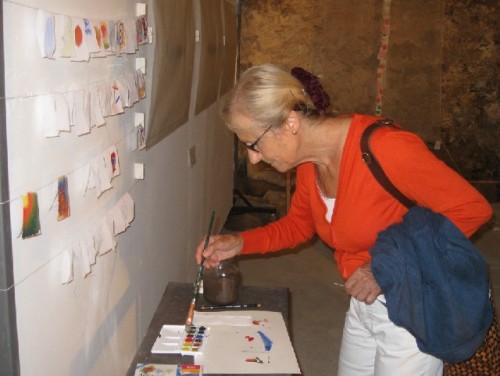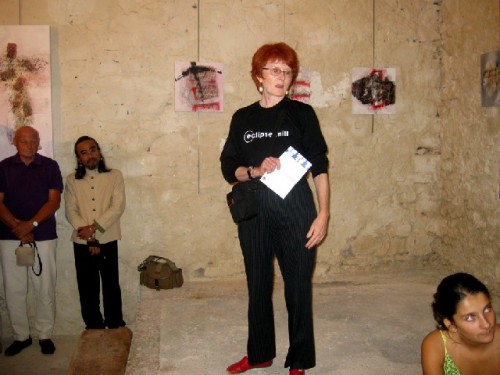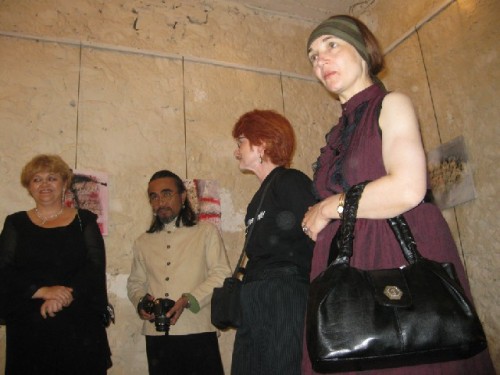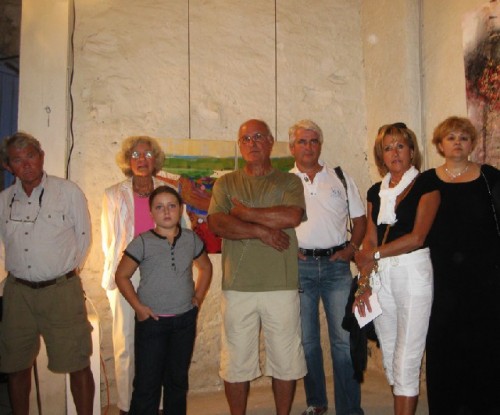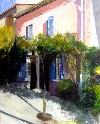Paraza, France: Symposium and Vernissage
Sponsored by East West Artists Hosted by Christine and Werner Endriss
By: Charles Giuliano - Nov 22, 2009
12e Symposium d'art contemporain
September 12 through September 21
Paraza, France
Organized by Dorothea Fleiss and East West Artists
Sponsored and hosted by Christine and Werner Endriss
In association with the organizations Le Pont and Le C.L.A.P.
Participating artists: Lyudmila Dakhova (Ukraine), Dorothea Fleiss (Germany), Padungsak "Toi" Kochsomrong (Thailand), Istvan Korbely (Hungary), Maklary Kalman (Hungary), Mathe Rainer (Hungary), Takata Yoshiki (Japan). Journalists; Charles Giuliano and Astrid Hiemer, (USA).
Recently the artist daughter of Christine and Werner Endriss participated in a symposium held annually in Carei, Romania organized by Dorothea Fleiss of East West Artists. Since they are neighbors in Stuttgart the couple met with Fleiss and explored the possibilities of hosting a symposium in their summer home in Paraza, France.
This would be the 12th but not last time that Fleiss organized a symposium. The artists were selected from participants in the Carei events. They have long term associations with Fleiss who raises funds for these gatherings entirely through her own and private sources. By not seeking grants or government support she is able to exercise complete artistic control. Often she funds these events through barter and trade of works produced.
Astrid and I met Fleiss several years ago during the colloquium in Boston organized by the artist Mary Sherman and TransCultural Exchange. Since then Astrid and Dorothea have collaborated on several articles for Berkshire Fine Arts.com.. She and her daughter Suzie, stayed with us in our North Adams studio when Fleiss was as a delegate to Sherman's event last spring.
Dorothea states that "I could not do this without the support of my family." In Carei her mother helps to prepare meals for some fifty visiting artists working in a former castle. Her husband, whom we have not met, is understanding of her need for world travel. She has organized events in China and has plans for one in Mongolia. After the Paraza event in September she met with artists in Austria. Dorothea is a woman or remarkable energy and vision.
Last September we were invited by Fleiss to participate in the ten day symposium in Paraza, France.
When we gathered from Europe, Asia and the United States, on a Saturday, in the home of Christine and Werner, in the village of Paraza nestled in the South of France, there was a mood of comradeship and celebration. That night we enjoyed a festive dinner followed by singing and dancing. Neighbors came while the artists met and interacted.
That Sunday several cars formed a caravan to nearby villages. There was a picnic lunch at the site of a Neolithic burial. We shared sandwiches and passed around wine and beer. The group moved on to another quaint and historic site with yet another break for beer and coffee.
By Monday morning Fleiss was eager to get started with intensive studio work that would end the symposium with a special exhibition in the community organized gallery space next to the canal.
The intention of the project was to bring together artists to live and work. There was a sharing of a common thread of site specific culture, language, environment and landscape. The challenge and joy was to discover how we might bring our skills, crafts, and ideas that would blend and interact. How would the flavor, texture and ambiance of the unique village work its way into our hearts and minds? In what manner would we change and morph with the experience? How would that influence and become embedded in the work produced?
In getting started we were inspired by the enthusiasm and charisma of Fleiss. But there were decisions to be made and impediments to overcome. One immediate issue was how to find a common language and means of communication? While we were located in France much of the conversation was conducted in English and German. Three of the artists Istvan Korbely, Maklary Kalman, and Mathe Rainer spoke Hungarian, as did the cook, Babi. There was some English but a lot of body language. At night, Korbely introduced some American blues into his menu of international songs. Padungsak "Toi" Kochsomrong from Thailand spoke excellent English and we enjoyed insightful conversations about his work. Takata Yoshiki spoke more limited English but compensated with infectious humor making the most of every phrase.
Astrid mostly spoke German with our hosts Christine and Werner. As time progressed I found myself engaged in multi lingual conversations. It was one of the more exciting aspects of the residence. As well as the chance, under such close quarters, to get to know and become involved with a group of artists.
Although Astrid and I were not participating in the studio activity it was a part of our daily experience. After exploring different venues and possibilities the artists opted to work side by side in close quarters. It was fascinating to see the development of work particularly when several artists started to pull all nighters as the deadline for the exhibition approached. There was a sense of wanting to create a significant body of work.
But this was defined differently by the individual artists and their practices. In some aspects the planning of the symposium had been disrupted. At the last minute several artists were unable to attend through a combination of other commitments or difficulty obtaining visas. Several of these artists were sculptors. The artists who did attend, for the most part, created paintings and drawings. Toi is known for his performance work but in Paraza he was inspired to create surreal, fantasy landscapes with elaborate patterning and a Thai inflected palette. The flowers and colors of the village were an influence on the resultant images.
Korbely initially created a series of small, abstract, gestural paintings. But for most of the time he concentrated on two landscapes inspired by Paraza. One was a view of the front of the Endriss residence where we gathered for meals, conversations, and song. Another image showed the tree lined main road through the village with signs labeled in recognition of other sites where Fleiss has organized symposia.
The paintings of Rainer seemed to function independently from the local ambiance. The artist created figure paintings of nude, fantasy women with ample breasts. During one of our excursions he purchased a vintage magazine. It served as a source and inspiration for the work.
The frenzy and intensity of the charette was less evident in the abstract expressionist paintings of Kalman. There was a meditative process with as much contemplation and poetic reflection as the actual energy of painting. Kalman took many cigarette and coffee breaks as the work evolved. Exchanges and conversations with him were fascinating and shamanistic. This was evident in the deeply absorbing and deft canvases that resulted. Much of his oblique and complex persona remained on the canvas but in a manner both absorbing and obfuscating.
Kalman is regarded as one of the most important contemporary painters in Hungary. This year he will again show in a gallery in San Diego. In an amusing exchange he recalled time spent in California and Las Vegas. During our day trips a common question was "Where's Kalman" as he would just wander off on his own.
As our time progressed there were ongoing conversations about the missing artist Lyudmila Dakhova. It seemed that after a bus trip from the Ukraine to Paris she had become stranded. The friend who was to drive her to Paraza became ill. Then Lyudmila also got sick. It was a great adventure and triumph when she finally arrived.
We were all intrigued by Lyudmila. She spoke no language other than Russian which came forth from her non stop. This was punctuated with body language, facial expressions, and a rich vocabulary of gestures. She engaged me in quite remarkable conversations often about the mystical nature and sources for her complex, deeply patterned, and symbolist works. After a few days we all felt perfectly in sync with her manner of communication. In that regard she may have proved to be the most articulate of all of us.
Like Dorothea, Lyudmila was intent on creating a significant body of work during the symposium. She had taken some small framed pieces in her luggage but this proved to be not necessary. By the time of the exhibition she had created a number of works of varying scale.
The enigma of this intense flurry of activity proved to be Takata. When we asked him, day after day, how the work was coming his response was always "Thinking." This was followed by an outburst of laughter. But it was also a straight and serious answer.
Because he was not a part of the frenzy in the studio, which we visited several times daily, he was always free for a conversation over coffee or to join in one of our day trips. Werner took Astrid, Takata and I for a trip to one of the weekly markets in a nearby village. Most of the time Takata wandered around studying and absorbing the ambiance of Paraza.
As time progressed he developed a wish list of materials that Werner shopped for. He required some fabric and there were other items. As the count down to the installation approached Takata and Dorothea engaged in an intense discussion of the exhibition space. It was a unique environment with interesting features and Takata was looking for a means of installing a site specific, conceptual piece.
It was fascinating to see how after all that "thinking" the actual piece evolved. During the installation we visited and Takata invited us into his space. It was interesting to see how the cloth was hung as a backdrop for small watercolor works. Another area entailed small folded sheets of paper strung over a string. There was a kit of watercolors. Visitors were invited to paint on the papers and then hang them on the line as their contribution to the piece. During the vernissage this evoked intense activity. It was a way of further involving the village in the work.
By the end of the Symposium Fleiss has created a substantial body of work. Some of this was intended for an upcoming exhibition so this was a further impetus for her intensive output. One series entailed gluing down pages from a book of prayer. Over this were written texts. She explained that they were thoughts and hopes for her daughter Suzie who is embarking on a new life and career. It was a signifier of rites of passage resulting in talismans of hope.
After all of that creative energy the vernissage was just wonderful. It was gratifying that so many from the village attended the event. The community is now represented by half of its indigenous French citizens merged with a large international community who have planted roots in recent years. The event was unique in bringing everyone together. Certainly many were curious about the artists whom they had seen roaming the streets of the village. Just what did it all mean?
For Christine and Werner it was a serene and gratifying moment. During our communal dinner the night before the vernissage Werner and Christine offered toasts and made remarks about what the experience had meant to them. They took enormous pride in what was created. Works donated by the artists represent an enduring signifier of the event. For all of us the images and experiences are collected in our hearts and minds. There will always be a part of Paraza in us.
During the vernissage there were several speeches. Werner spoke in his native German translated by a teacher into French. Astrid and I were asked to introduce the artists. It is probably the first and last time I will make a speech in French. I still don't know how and why I did it. It just somehow blurted out of me. But the result was magical as everyone came up to me speaking a blur of French. To which I nodded, oui, oui, oui, all the way home.
Astrid Hiemer article on Paraza
First Giuliano article on Paraza

